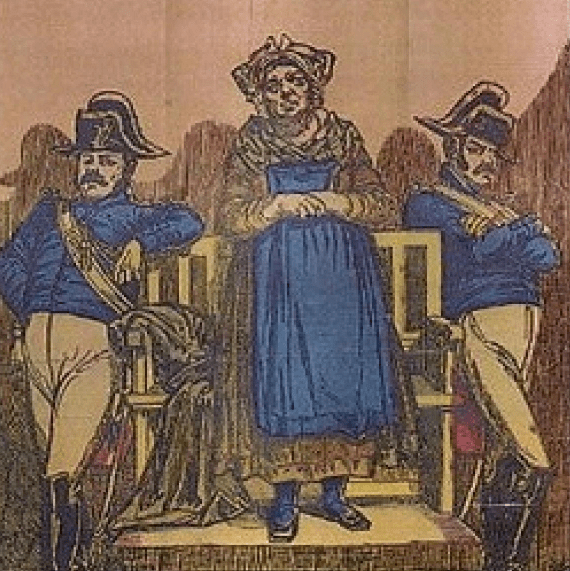By 1835, Hélène Jégado had put 17 people in their graves. Her religious fervor and humble beginnings made it difficult for victims and friends to believe she was capable of such prolific murder. But Jégado wasn’t done yet. Before she was brought to justice, her death toll would reach nearly 40 souls.
Orphaned at the age of seven, Jégado grew up with two aunts. They were servants at a rectory in Bubry, forcing Jégado to begin working early in life. There, she learned to cook and became infatuated with religious life.

Photo Credit: Wikimedia Commons
At 24, Jégado moved to Séglien, where she was employed by a local priest. Over the course of three months, inexplicably all seven members of his household, including Jégado’s own sister, died. Exhibiting the typical bereavement and shock of any other person, Jégado evaded suspicion. As the deaths came around the same time as a cholera epidemic, murder wasn’t a consideration.
After the death of her sister, Jégado took her place in their aunt’s household. Within a few months, her aunt and two other members of the household died. According to those present, Jégado was beside herself with grief, exclaiming, “wherever I go, people die.” And yet, no one had put two and two together. She took a room—the landlord and her daughter died. In the same town, five more people who had made the unfortunate decision to offer Jégado employment or a place to live met their early deaths.

Photo Credit: Wikimedia Commons
By 1835, the coincidences were too strange to ignore. Jégado was fired for vandalism, theft, and the charge of “sacrilege” by one convent. Jégado then worked in various households in northwestern France, where many of her employers or their family members fell ill and died. The most notorious murder she committed was that of Marie Bréger, a child, in 1841. Still, Jégado roamed free for another decade before anyone thought to ask the tough questions.
Though most of her victims showed signs of arsenic poisoning, at that time it was quite difficult to identify symptoms conclusively as poisoning. Vomiting, weakness, and abdominal pain were symptoms to a variety of ailments, and there wasn’t an infrastructure to investigate possible poisonings.
For about 10 years, Jégado seems to have lain dormant. Perhaps she thought she had pushed her luck and was content to live out her days. But then, in 1850, Jégado joined the house of Théophile Bidard, a prominent law professor. When not one but two of his servants fell ill and died with similar symptoms, finally, one doctor suggested an autopsy. Even before they had performed the autopsy, Jégado raised eyebrows when she went about the house insisting on her innocence. She was arrested on July 1, 1851.

Photo Credit: Wikimedia Commons
While on trial, Jégado behaved strangely, talking in voices and speaking out of turn. Autopsy on those tied to Jégado, upon exhumation, revealed arsenic poisoning, and she was sentenced to death by guillotine. French law at the time had a strict statue of limitations, so she was only tried for three murders. Today, historians think Jégado was most likely one of the most prolific female serial killers of all time, with an estimated 36 victims.
Her defense lawyer argued that Jégado shouldn’t receive the death penalty because she would benefit from more time to repent from her crimes—and she was already dying of cancer anyway. The court was not empathetic. Though by that time Jégado’s crimes had been pushed out of the paper by the French coup d’état of December 1851, a crowd of onlookers still turned up in the snow covered streets on February 26, 1852, to see 49-year-old Jégado meet her death by the steely blade of the guillotine.
This story was first published on The Lineup
Read more below:
9 American Horror Story Characters Based on Real-Life Killers
8 Real-Life Cabin in the Woods Murders That Will Make You Lock Your Doors






